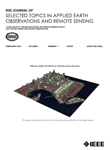
IEEE Journal of Selected Topics in Applied Earth Observations and Remote Sensing
Scope & Guideline
Illuminating the Path for Remote Sensing Advancements.
Introduction
Aims and Scopes
- Remote Sensing Technologies:
The journal emphasizes the development and application of various remote sensing technologies, including satellite imagery, UAVs, and SAR systems, to monitor and analyze earth processes. - Data Fusion and Integration:
A core area of focus is the integration of data from multiple sources, such as optical and SAR imagery, to enhance the accuracy and utility of remote sensing applications. - Machine Learning and Artificial Intelligence:
The use of machine learning techniques, including deep learning, for tasks such as image classification, change detection, and anomaly detection is prevalent in the journal's publications. - Environmental Monitoring and Assessment:
The journal covers studies related to environmental monitoring, including land use change, climate impacts, and natural disaster assessments using remote sensing data. - Methodological Innovations:
Research on innovative methodologies for data processing, analysis, and interpretation in remote sensing, such as advanced algorithms and modeling approaches, is a significant focus. - Application in Agriculture and Ecology:
The journal includes applications of remote sensing technologies in agricultural monitoring, forestry, and ecological studies, highlighting their role in sustainable resource management. - Geospatial Analysis and Visualization:
Emphasis is placed on geospatial analysis techniques and visualization tools that aid in the interpretation of remote sensing data for various applications.
Trending and Emerging
- Deep Learning Applications:
There is a significant increase in the application of deep learning techniques for various remote sensing tasks, including image classification, change detection, and anomaly detection, showcasing the technology's transformative impact on the field. - Multisensor Data Fusion:
A growing trend is the integration of data from multiple sensors, such as combining SAR and optical imagery, to improve the accuracy and applicability of remote sensing analyses. - Real-Time Processing and Applications:
Research focusing on real-time processing capabilities and applications is trending, driven by the need for timely data utilization in disaster response and environmental monitoring. - Climate Change Monitoring:
There is an emerging focus on utilizing remote sensing data for monitoring climate change impacts, including land surface temperature changes and ecological responses. - Geospatial Artificial Intelligence:
The intersection of geospatial analysis and artificial intelligence is gaining momentum, with studies exploring innovative methods for spatial data analysis and decision-making. - Environmental and Agricultural Applications:
The journal is increasingly publishing studies that apply remote sensing technologies to agricultural monitoring, land use management, and environmental conservation, reflecting a societal need for sustainable practices. - Explainable AI in Remote Sensing:
Emerging research on explainable AI techniques is gaining attention, focusing on improving the interpretability and transparency of machine learning models used in remote sensing applications.
Declining or Waning
- Traditional Remote Sensing Techniques:
There appears to be a waning interest in traditional remote sensing methods that do not incorporate advanced analytics or machine learning, as newer technologies and approaches gain traction. - Low-Resolution Imagery Applications:
Research focusing on low-resolution imagery applications is becoming less frequent, with a shift towards high-resolution and high-frequency data utilization. - Basic Statistical Methods:
The use of basic statistical methods for data analysis is declining as more sophisticated machine learning and AI techniques become standard practice in the field. - Single Sensor Analysis:
Research that focuses exclusively on single-sensor data analysis is diminishing, with a growing emphasis on multimodal sensor data fusion for improved results. - General Reviews and Surveys:
While reviews and surveys are important, there is a noticeable decrease in general review articles, as the journal prioritizes original research contributions with novel findings.
Similar Journals
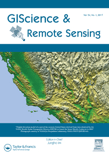
GIScience & Remote Sensing
Connecting Global Researchers through Open AccessGIScience & Remote Sensing, published by Taylor & Francis Ltd, stands as a leading journal in the realm of Earth and Planetary Sciences, holding a prestigious Q1 ranking. Since its transition to Open Access in 2022, the journal has significantly broadened its reach, enabling researchers, professionals, and students across the globe to disseminate and access cutting-edge research related to geographic information science and remote sensing technologies. With a focus on publishing high-quality, peer-reviewed articles that contribute to the understanding of the Earth’s processes, environments, and interactions, this journal not only supports advancements in scientific knowledge but also fosters interdisciplinary collaboration. Based in the United Kingdom, GIScience & Remote Sensing continues to pave the way for innovative methodologies and applications, solidifying its vital role within the scientific community.
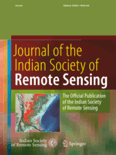
Journal of the Indian Society of Remote Sensing
Connecting Scholars to the Frontiers of Remote SensingJournal of the Indian Society of Remote Sensing, published by SPRINGER, stands as a prominent contribution to the fields of Earth and Planetary Sciences and Geography, Planning and Development. With an ISSN of 0255-660X and an E-ISSN of 0974-3006, this esteemed journal has been in circulation since 1973, showcasing a rich repository of research and advancements in remote sensing applications, methodologies, and technologies, specifically within the Indian context and beyond. The journal's impact is underscored by its placement in the Q2 category of both Earth and Planetary Sciences and Geography as of 2023, ranking impressively in the Scopus database with significant percentiles. With the intent to bridge the gap between theory and practical application, it invites scholars, researchers, and professionals to contribute innovative studies that enhance our understanding of remote sensing and its implications in various domains. The Journal of the Indian Society of Remote Sensing is a vital resource for anyone looking to remain at the forefront of research in this dynamic field.

ISPRS International Journal of Geo-Information
Transforming spatial data into actionable insights.ISPRS International Journal of Geo-Information, published by MDPI, stands at the forefront of the field of geospatial sciences, contributing valuable knowledge and research insights since its inception in 2012. This open access journal, which boasts an impressive collection of articles that emphasize the integration of geographic information systems (GIS) in Earth and planetary sciences, currently achieves a remarkable standing, with a 2023 impact factor ranking in the Q1 category for both Earth and Planetary Sciences and Geography, Planning and Development. Researchers and professionals engaged in the study of spatial data, remote sensing, and innovative geoinformation technologies will find the journal an essential resource, offering diverse perspectives and methodologies. With its open access model, the journal aims to promote the dissemination of knowledge globally, fostering collaboration among scholars while pushing the boundaries of research in geoinformation disciplines. The journal is based in Switzerland and is well-positioned to contribute significantly to the understanding and application of geospatial data for societal advancements.

Remote Sensing Letters
Pioneering Insights in Remote Sensing MethodologiesRemote Sensing Letters, published by Taylor & Francis Ltd, is a distinguished journal that serves a vital role in the fields of Earth and Planetary Sciences as well as Electrical and Electronic Engineering. With an ISSN of 2150-704X and an E-ISSN of 2150-7058, this journal has been disseminating cutting-edge research since its inception in 2010, converging toward a future of innovation and technological advancement scheduled through 2024. The journal is recognized for its impactful scholarship, achieving a Q2 quartile ranking in both its categories as of 2023, highlighting its significance in enhancing academic discourse and applications in remote sensing methodologies. Although it does not operate under an open-access model, it provides access to essential findings that address contemporary challenges in the remote sensing domain. Located in the United Kingdom at 2-4 Park Square, Milton Park, Abingdon, OX14 4RN, Remote Sensing Letters is a crucial resource for researchers, professionals, and students committed to advancing their understanding and application of remote sensing technologies.
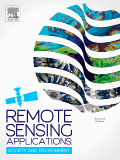
Remote Sensing Applications-Society and Environment
Empowering research that reshapes our understanding of the Earth.Remote Sensing Applications-Society and Environment, published by Elsevier, stands at the forefront of interdisciplinary research, bridging the fields of remote sensing and environmental science. With an impressive impact factor and recognition within the Q1 quartile in both Computers in Earth Sciences and Geography, Planning and Development, the journal is a vital resource for researchers, professionals, and students committed to advancing our understanding of environmental dynamics through innovative remote sensing technologies. Since its inception in 2015, this journal has cultivated a rich repository of knowledge, addressing pertinent societal and environmental issues, making it a leading source for transformative applications in the field. Accessible and relevant, articles published here not only explore theoretical advancements but also practical implications, ensuring research findings are effectively disseminated to stimulate further inquiries and applications in sustainability and ecological stewardship. The journal's strong Scopus rankings, particularly within its categories, solidify its role as an essential platform for scholarly exchange.

Remote Sensing in Ecology and Conservation
Bridging technology and conservation for impactful environmental solutions.Remote Sensing in Ecology and Conservation is a pioneering journal published by WILEY that has been a beacon of open-access research since 2015. With an E-ISSN of 2056-3485, this journal stands at the forefront of the intersection between ecological research and technological innovation. It is recognized for its significant impact, boasting Q1 rankings across several prestigious categories in 2023, including Computers in Earth Sciences and Ecology, emphasizing its commitment to high-quality, influential scholarship. The journal provides a platform for researchers and practitioners to share their findings in remote sensing applications that advance ecological conservation efforts. Encompassing a broad scope that includes studies on landscape changes, biodiversity assessments, and environmental monitoring, it serves as an essential resource for education and practice in the field. With impressive ranks in Scopus, including a remarkable 6th place in Earth and Planetary Sciences, it continues to shape the dialogue in ecology and conservation. As an open-access journal, it champions the dissemination of knowledge, making critical research accessible to a global audience, thereby fostering innovation and collaboration in the pursuit of sustainable environmental practices.
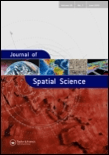
Journal of Spatial Science
Transforming Understanding of Our Spatial WorldThe Journal of Spatial Science, published by Taylor & Francis Ltd, serves as a prominent platform for the dissemination of research in the interdisciplinary fields of geography, atmospheric science, and energy. With an ISSN of 1449-8596 and an E-ISSN of 1836-5655, this journal has established itself as a vital resource since its inception in 2004, boasting an impressive convergence period extending to 2024. Recognized in the Q3 quartile for Atmospheric Science and Energy (miscellaneous), and achieving a Q2 classification in Geography, Planning and Development in 2023, the journal not only reflects the evolving complexities of spatial science but also underscores its increasing relevance in addressing contemporary global challenges. The journal holds a commendable position in Scopus rankings, with notable placements in various categories, further highlighting its academic significance. Researchers, professionals, and students are encouraged to engage with the rich content offered, as the Journal of Spatial Science remains committed to advancing knowledge and fostering discussions pertinent to spatial analysis and its applications.

Remote Sensing
Innovative Research at the Forefront of Remote Sensing TechnologyRemote Sensing is a highly esteemed journal published by MDPI, dedicated to the domain of Earth and Planetary Sciences. With an impressive impact factor reflected in its rank of #16 out of 195 in the general Earth and Planetary Sciences category, this journal achieves a commendable 92nd percentile among its peers, indicating its significant contribution to the field. Since its inception in 2009 as an Open Access journal, it has enabled researchers, professionals, and students from around the globe to access high-quality, peer-reviewed articles that delve into the latest advancements in remote sensing technologies, methodologies, and applications. Based in Switzerland, Remote Sensing serves as a vital platform for disseminating innovative research that supports and enhances our understanding of Earth's processes and environments, ensuring scientific knowledge remains freely accessible and impactful.

IEEE Geoscience and Remote Sensing Letters
Innovating Insights in Geoscience and Remote SensingIEEE Geoscience and Remote Sensing Letters is a distinguished journal published by the IEEE-INST ELECTRICAL ELECTRONICS ENGINEERS INC, focusing on the cutting-edge realms of geoscience and remote sensing. Since its inception in 2004, the journal has maintained a significant role within its field, achieving a robust impact factor that places it in the Q1 category for both Electrical and Electronic Engineering and Geotechnical Engineering and Engineering Geology, reflecting its high-quality research output and influence. The journal is highly ranked in Scopus, securing the 35th position in Earth and Planetary Sciences and the 154th position in Engineering, showcasing its broad academic reach and engagement with current advancements in technology and earth sciences. Although the journal is not open access, it remains accessible to a wide readership, fostering an environment for innovation and knowledge sharing among researchers, professionals, and students interested in remote sensing technologies and geosciences. With its objective to publish concise articles that present significant results and advancements, IEEE Geoscience and Remote Sensing Letters continues to be a vital resource for anyone engaged in these dynamic fields.
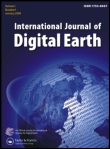
International Journal of Digital Earth
Fostering collaboration in the realm of digital Earth sciences.Welcome to the International Journal of Digital Earth, a premier open-access journal published by Taylor & Francis Ltd, dedicated to advancing the field of digital geoscience. With its ISSN 1753-8947 and E-ISSN 1753-8955, this journal has established itself as a vital resource for scholars and practitioners alike since its inception in 2008. The journal is at the forefront of interdisciplinary research, showcasing a diverse scope from Earth sciences to computer science applications, evidenced by its impressive ranking in the 2023 Scopus database. It holds a Q1 categorization in Earth and Planetary Sciences, with a percentile rank among the top 16% of its peers, and also stands out in the Q2 quartile for both Computer Science Applications and Software disciplines. The journal's commitment to open access, established in 2022, underscores its dedication to disseminating knowledge and fostering collaboration. By providing a platform for high-quality research, the International Journal of Digital Earth plays a critical role in addressing the complexities of our changing planet through innovative digital solutions. Whether you are an experienced researcher or a student, this journal is an essential addition to your academic toolkit.